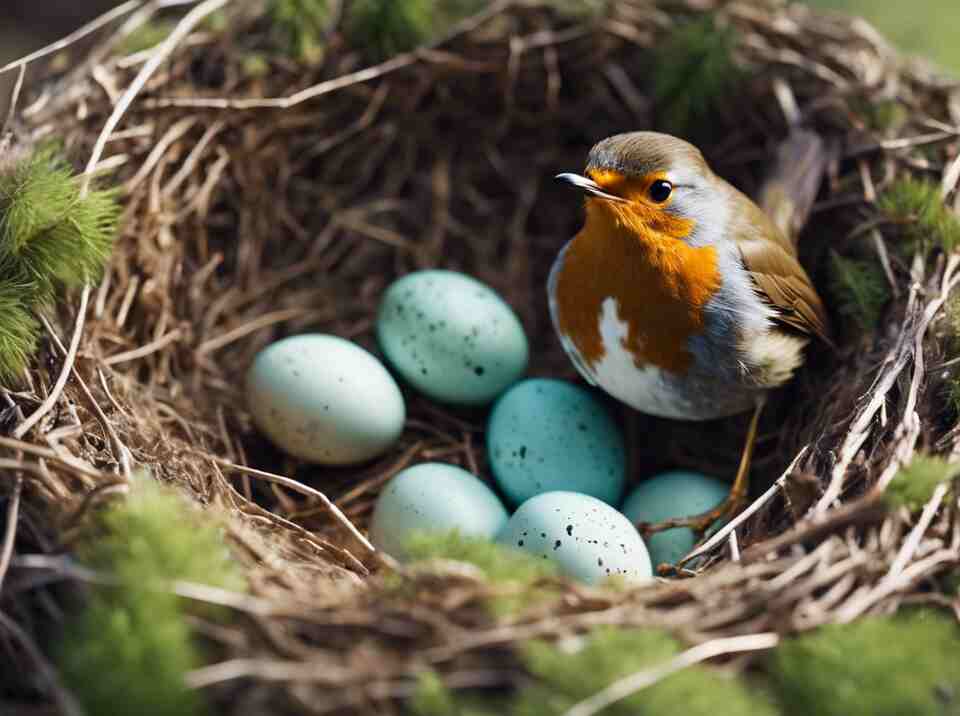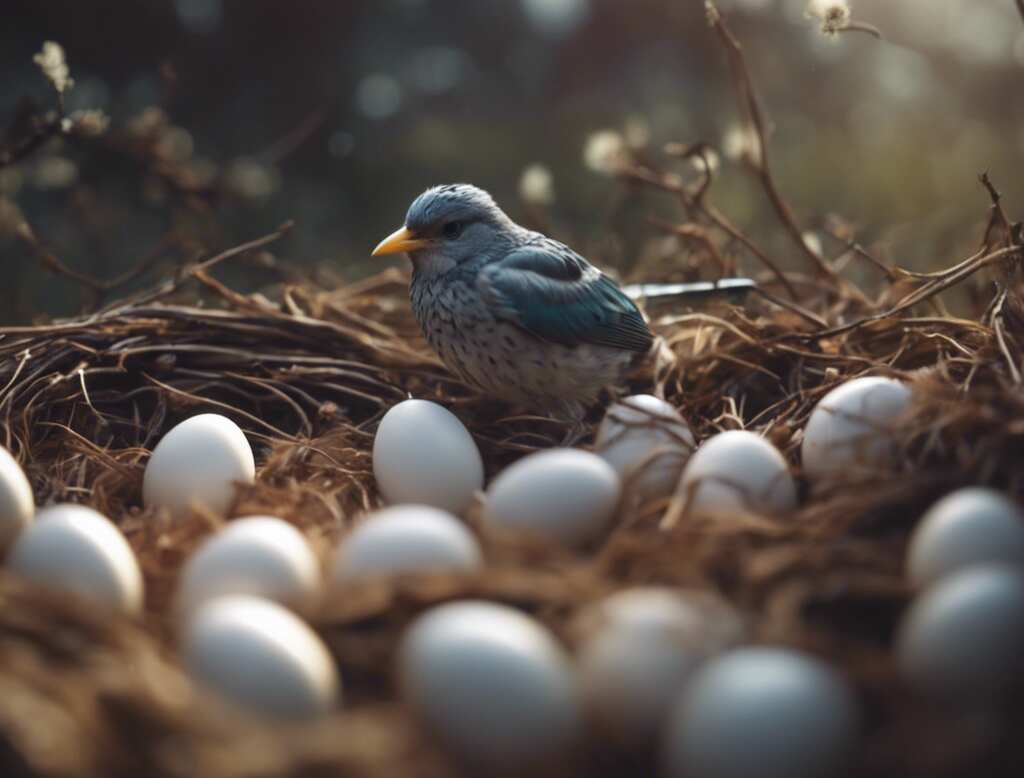Birds are remarkable creatures, possessing an array of evolutionary adaptations that have enabled them to thrive in diverse environments. One intriguing aspect of avian biology is their ability to perceive the status of their eggs, particularly whether they are viable or have ceased development. This captivating topic has attracted the attention of ornithologists and animal behaviorists, leading to a deeper understanding of the remarkable sensory capabilities of our feathered friends.
Table of Contents [show]
Do Birds Have the Ability to Sense Dead Eggs?
Sensory Cues: How Birds Detect Egg Viability
Birds are equipped with a remarkable array of senses that allow them to assess the condition of their eggs. One of the primary means by which they accomplish this is through olfactory (smell) cues. Studies have shown that certain bird species, such as the domestic chicken, can detect changes in the chemical composition of their eggs, which can indicate whether the embryo is developing properly or if the egg has become non-viable.
Additionally, birds may rely on visual and tactile cues to assess the status of their eggs. They may carefully inspect the size, shape, and appearance of the eggs, as well as any changes in their texture or weight, to determine whether the embryo is thriving or if the egg has become compromised.
Adaptive Behaviors: How Birds Respond to Dead Eggs
When birds detect that an egg within their clutch has ceased development or died, they may exhibit a range of behavioral responses. Some species, such as the American robin, will remove the dead egg from the nest, either by carrying it away or simply pushing it out. This behavior serves to maintain the cleanliness and hygiene of the nest, reducing the risk of bacterial or fungal growth that could threaten the remaining viable eggs.
In other cases, birds may choose to abandon the entire clutch if they determine that a significant portion of the eggs are no longer viable. This decision is likely based on a complex assessment of the costs and benefits of continuing to invest resources in a clutch that may not produce any successful hatchlings.
The Role of Incubation and Brooding
Incubation and brooding play a crucial role in the development and survival of avian offspring. During these processes, birds carefully regulate the temperature, humidity, and other environmental factors within the nest to create the optimal conditions for their eggs to hatch.
Interestingly, some studies have suggested that birds may be able to sense subtle changes in the temperature or other physical characteristics of their eggs, which could indicate whether the embryo is developing normally or has ceased to thrive. By adjusting their incubation or brooding behavior accordingly, birds may be able to enhance the chances of successful hatching for the viable eggs in their clutch.
Conservation Implications
Understanding the ability of birds to detect and respond to dead or non-viable eggs has important implications for conservation efforts. By studying these behaviors, researchers can gain valuable insights into the overall health and well-being of bird populations, as well as the factors that may be influencing their reproductive success.
This knowledge can inform the development of more effective conservation strategies, such as habitat management, nest monitoring, and targeted interventions to support vulnerable bird species. By preserving the delicate balance of avian ecosystems, we can ensure the continued survival and flourishing of these remarkable creatures.
The capacity of birds to perceive the viability of their eggs is a captivating and complex aspect of avian biology. Through their remarkable sensory capabilities and adaptive behaviors, these feathered creatures demonstrate a profound understanding of the intricate processes that underpin the survival of their offspring. As we continue to unravel the mysteries of the avian world, this knowledge may prove invaluable in our efforts to protect and conserve these vital members of our shared ecosystems.

The Behavioral Cues That Indicate a Bird’s Awareness of Egg Viability
Birds are fascinating creatures, and understanding their behaviors can provide valuable insights into their overall well-being and reproductive health. One aspect of avian behavior that has long intrigued researchers is the ability of birds to discern the viability of their own eggs. While it may seem like a simple task, the mechanisms by which birds can detect if an egg is alive or dead are quite complex and nuanced.
Egg Inspection and Adjustments
One of the primary ways that birds assess the status of their eggs is through regular inspection and manipulation. By gently rolling, turning, or repositioning the eggs in the nest, birds can gather important tactile information about their condition. Eggs that are viable and developing typically feel warm to the touch, while those that have ceased development will feel cool and potentially lifeless.
Additionally, birds may make subtle adjustments to the positioning of their eggs within the nest, either to ensure even heating and incubation or to remove any non-viable eggs. This behavior can be observed as the bird carefully rearranges the eggs, sometimes even pushing a suspected “bad” egg to the edge of the nest or completely removing it.
Auditory Cues
Another way that birds may detect the viability of their eggs is through auditory cues. Many species of birds, particularly those that incubate their eggs for extended periods, have the ability to hear vocalizations or movements coming from within the egg. These subtle sounds can indicate that the embryo is alive and developing normally.
Conversely, the absence of such sounds, or the presence of unusual or muffled noises, may signal to the bird that an egg is no longer viable. In response, the bird may adjust its incubation behavior, dedicating more time and attention to the healthy eggs while potentially neglecting or even abandoning the non-viable ones.
Visual Inspection
While the primary methods of assessing egg viability involve touch and sound, some birds may also rely on visual cues to make this determination. By carefully observing the appearance and condition of the eggs, birds can sometimes detect changes that indicate a lack of development or the presence of abnormalities.
For example, eggs that appear discolored, cracked, or otherwise visually different from the healthy ones may prompt the bird to investigate further. Some species, such as the American Coot, have even been observed carefully rotating their eggs to inspect them from multiple angles, suggesting a highly attuned visual awareness of their eggs’ status.
Hormonal Responses
Interestingly, recent research has suggested that the ability of birds to detect non-viable eggs may also be influenced by hormonal factors. Studies have shown that changes in the bird’s endocrine system, particularly the levels of prolactin and other reproductive hormones, can trigger behavioral responses that indicate an awareness of egg viability.
For instance, when a bird senses that one or more of its eggs are no longer viable, its prolactin levels may drop, leading to a reduction in brooding behavior and, in some cases, the abandonment of the non-viable eggs. This hormonal response can be seen as a adaptive mechanism that allows the bird to focus its energy and resources on the healthiest eggs, increasing the overall chances of successful reproduction.
The behavioral cues that indicate a bird’s awareness of egg viability are complex and multifaceted. Through a combination of tactile, auditory, visual, and hormonal signals, birds are able to assess the status of their eggs and make informed decisions about their incubation and care.
Understanding these mechanisms can provide valuable insights into the reproductive strategies and overall well-being of avian species, ultimately contributing to the conservation and management of these fascinating creatures.

Conclusion
Birds have an impressive ability to detect the viability of their eggs, utilizing various behavioral cues and instinctual responses. From the moment an egg is laid, birds begin to monitor its condition, alert to any signs that suggest the egg may have ceased developing.
One of the primary ways birds can sense if an egg is dead is through physical inspection. By gently rolling or turning the egg, a bird can detect if it has become cold, heavy, or if the contents have shifted. This tactile feedback provides crucial information about the egg’s status. Additionally, birds may notice if an egg’s color or texture has changed, indicating it is no longer developing normally.
Beyond physical examination, birds also seem to possess an innate sense of egg viability. Studies have shown that birds can detect subtle chemical or hormonal changes in the egg that signal its lack of life. This allows them to differentiate between healthy, developing eggs and those that have stopped progressing.
The behavioral cues that reveal a bird’s awareness of egg viability are numerous and fascinating. For instance, birds may spend less time incubating a dead egg, or they may alter the frequency and duration of their visits to the nest. Some species have even been observed removing dead eggs from the nest, demonstrating a clear understanding that the egg is no longer viable.
In the case of communal nesting species, where multiple birds contribute to the incubation of a shared clutch, the ability to detect dead eggs becomes even more critical. If a bird senses that one or more eggs in the nest have died, it may adjust its behavior to focus more attention on the remaining healthy eggs, ensuring their successful development.
Interestingly, the way birds respond to dead eggs can also vary depending on the stage of the nesting cycle. Early in the incubation period, birds may be more inclined to continue caring for a dead egg, perhaps in the hopes that it will ultimately hatch. However, as the nesting season progresses and the window for successful hatching narrows, birds become more likely to abandon or remove dead eggs, prioritizing the healthy ones.
This intricate understanding of egg viability is a testament to the remarkable sensory capabilities and adaptability of birds. By being able to accurately detect the status of their eggs, birds can make informed decisions about resource allocation, nest defense, and ultimately, the success of their reproductive efforts.
The implications of this avian ability extend beyond the individual nest, as it also has broader ecological significance. By removing or abandoning dead eggs, birds help prevent the spread of potential pathogens or the attraction of predators to the nest site. This contributes to the overall health and resilience of avian populations.
As we continue to deepen our understanding of bird behavior and cognition, the insights gained into their capacity to sense egg viability are not only fascinating but also have the potential to inform conservation efforts and enhance our appreciation for the remarkable adaptations of these winged wonders. By unraveling the nuances of how birds perceive and respond to the status of their eggs, we gain a greater respect for the complex and intricate world of avian life.



